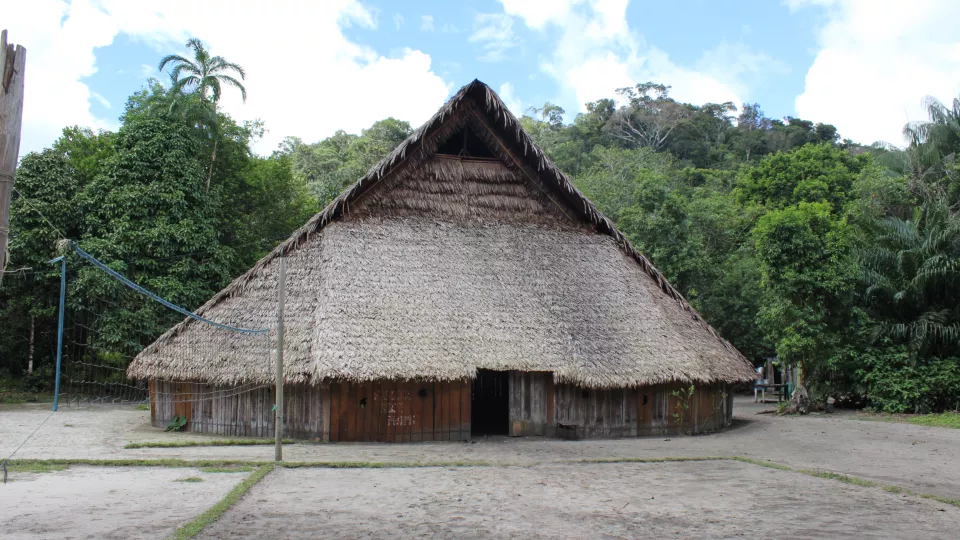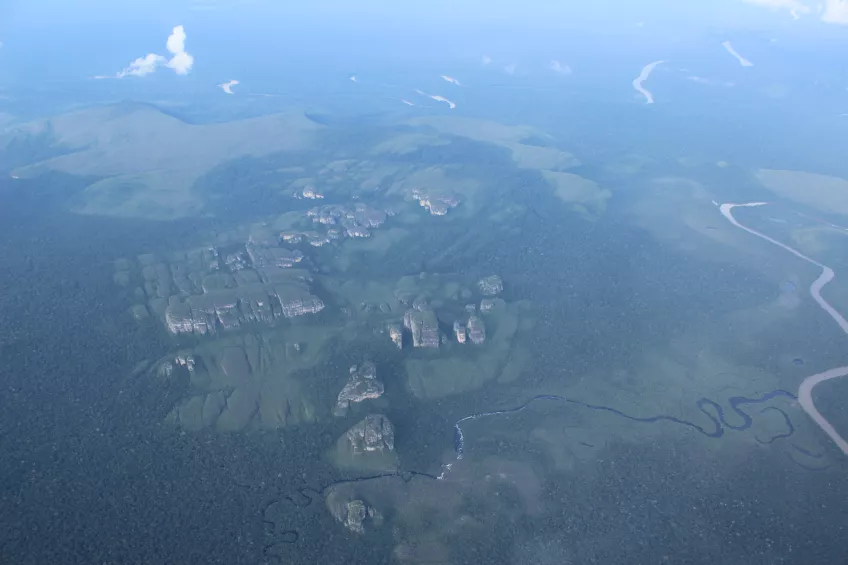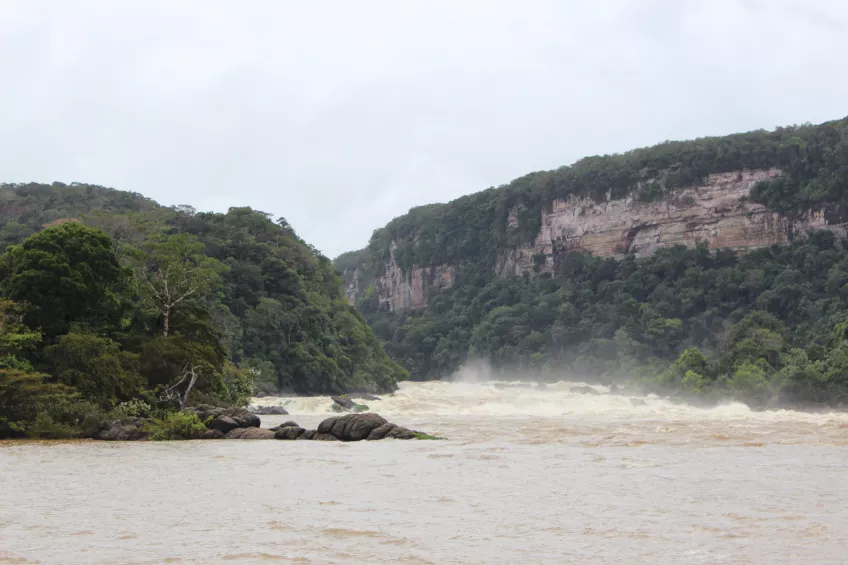My recent research trip to Amazon, Colombia was a stark reminder that sustainability science is as much about being at the forefront of knowledge as it is about physically visiting man-made frontiers and conflict areas.
I think this has to do with the importance to connect with local communities and people and try to understand how they see the world, what problems they have identified and want a solution to. It’s about taking a humble approach as a researcher and allowing yourself to be really open to other realities and have your questions partly drafted and informed in collaboration with others in order to attempt to drive transformations forward.
The research trip came to an abrupt halt. Instead of spending ten days in Nonuya de Villa Azul, an indigenous reserve made up of six different ethnicities living in a handful of communities and with a territory of 260,000 hectares, we had to leave after only four days because of an unexpected turn of the local security situation.
For me this was a very real and very sudden reminder of the armed conflict and the ongoing reality that still grapples parts of Colombia. Armed groups and former guerilla fighters are battling over access to resources and the control of important smuggling routes. Villa Azul is located at the banks of the Caquetá River, one of the major tributaries of the Amazon rivers and a smuggling highway to Brazil.
I was in the reserve together with a Colombian colleague, to pursue a research project about hunting and forest governance in the western Amazon (Colombia and Ecuador), funded by the Swedish Science Council (Vetenskapsrådet). We wanted to start up a research collaboration with people living in the reserve.
Once we had got permission from the communities to visit, and had managed to overcome the logistical struggle of getting to the area, which involved a two hour flight in an old DC3 second world war aircraft (there are no roads nor regular air service to the area) and finding someone experienced enough to steer a boat in difficult conditions in the strong currents and rapids of the river, we finally met the traditional authorities of Villa Azul.
We spent countless hours in the darkness of the traditional ancestral house (the Maloca) to talk about the purpose of our research, how we and the community envisions this collaboration, how we can work together and the timeframe in mind.
Questions generally revolved around the concepts of forest, traditional forest management and governance from a local perspective, the involvement of the state and the administrative and political challenges this brings along for the community, and also the role of local community members in the research itself.
The conversations we had were open, informative and we learned a lot about the history and the indigenous worldviews and concepts that guide the use of the territory. For example, in indigenous cosmology all elements, including animals and trees have spirits considered owners that have to be asked for permission in order to harvest or hunt any animal or tree.
Due to the size of the territory and the low population in the area (estimated at about 220 people), most of the forests were still well preserved and abundant in wildlife, including jaguars, tapirs, peccaries, etc.
Hunting, fishing and small-scale agriculture in home gardens (locally called chagras) are an integral part of local livelihoods. Fishing also provides a source of income and some species of large freshwater fish are sought after and can be sold to merchants in Araracuara from where it is flown out to nearby towns and markets. Meat from wild animals is usually not commercialised (it is mostly illegal to sell meat of wild animals in Colombia), but when a hunter harvests a tapir, some of the meat is either shared in the community or sold in nearby settlements like Araracuara.
After many hours conversing with the leadership of Villa Azul and an assembly with members from all communities inside the reserve, we agreed that we would start working first with the spiritual leader. At first we will focus on traditional use of forest fauna and hunting techniques, indigenous knowledge and cosmology related to different animal species and their place in the ecosystem and the territory as well as local management strategies.
Even though the trip was cut short, I’m looking forward to continue the collaboration that is just starting up, and the next couple of months will show how it works out and to what extent a more long-term and larger joint research effort can be implemented.
The very fact that we had to leave so abruptly is to me a confirmation of how important the research is and how we are constrained, over and over, by larger processes we cannot steer. Despite the peace agreement between the FARC and the government of Colombia, peace is still far away in some remote and rural areas of Colombia.
Apart from the ongoing struggle over power, control and resources, the aftermath of the peace agreement and the demobilisation of the FARC, also saw an almost instant increase in deforestation along the agricultural frontier of the Amazon.
On our way back from the reserve, which was only possible because we were lucky to catch a small plane that happened to arrive the next day, we saw how agriculture (cattle and coca plantations) contributes to the deforestation of the forest frontier.
Right now, Colombia is at a turning point and must fill the void in the remote rural areas left behind by the FARC, ensure the security of vulnerable communities who are experiencing a resurging violence, enforce environmental laws and address the underlying drivers of the armed conflict that still exist. In the past years Colombia has become one the most dangerous countries for indigenous and human rights activities and defenders of the environment. This is a disturbing trend, where working towards maintaining and developing local forest governance is only one piece of the puzzle.
Blog by Torsten Krause, researcher at LUCSUS.


